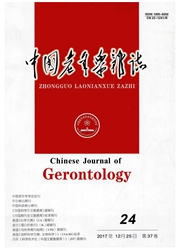

 中文摘要:
中文摘要:
目的通过观察益气活血中药对脑出血大鼠血肿周围新生血管内皮整合素α5亚基表达的影响,探讨益气活血法治疗脑出血的机制。方法 150只SD大鼠随机分为假手术组、模型组、益气组、活血组、益气活血组,通过立体定位向脑内苍白球注入Ⅶ型胶原酶0.5 U建立脑出血模型。假手术和模型组灌服蒸馏水,余各组灌服补阳还五汤或其益气、活血组分药物。运用免疫组织化学方法,半定量分析各组术后3、7、14、21、28 d各时点血肿周围新生血管内皮整合素α5亚基的表达。结果除假手术组外,模型组和各处理组的血管内皮整合素α5亚基表达趋势大致相近;3 d时即可见各组血肿周边血管内皮表达整合素α5亚基,各组表达无明显差异;7 d时各组阳性微血管分布靠近血肿,表达均增高;14 d时α5阳性表达进一步升高达到高峰,21 d时仍持续高表达;28 d显著下降(P〈0.05)。7、14、21 d时,益气活血组的表达还高于同时间点模型组;28 d活血组、益气活血组表达仍高于同时点模型组。结论益气活血法能促进脑出血大鼠血肿周围新生血管整合素α5亚基表达,提示该治法能通过调节脑出血后的新生血管的结构,影响微血管系统重建,达到修复损伤组织的目的。
 英文摘要:
英文摘要:
Objective To investigate the effect of Qi-tonifying and Stasis-eliminating therapy (QTSE) on expression of integrin or5 subunit around the hemotoma in the brains of intracerebral hemorrhagic rats. Methods One hundred and fifty Sprague-Dawley rats were di- vided into sham-operative (SO), model group, QTSE, QT and SE groups randomly. All the rats were established into an intracerebral hemorrhage (ICH) model by intracerebral stereotactic injection of collagenase type VII 0. 5 U into right globus pallidus except those in SO group ( saline injected instead) and the latter three group were orally administered with Buyang Huanwu Decoction ( a classical recipe for QTSE) or with either of its components for qi-tonification or for stasis-elimination, respectively. To SO and model groups, normal saline solutions were given instead. The expression of integrin α5 subunit was evaluated by immunohistochemical method, and the expression was analyzed semiquantitatively. Results Immunohistochemical results showecl that expression of integrin α5 subunit except for that of SO group was detected at 3 d and persisted for 28 d after ICH shared similar expression profile in each group. The expression was appeared on day 3, increased gradually and reached a peak on day 14 --21, then weakened on day 28. In QTSE group, the expression was higher than that of model group in day 7 - 28 (P 〈 0.05 ). Conclusions QEST therapy might modulate angiogenesis via upregulation of the expression of integrin α5 subunit around the hemotoma to promote the reconstruction of microvascular networks in the damaged areas which might be one of its mechanisms for ICH recovery.
 同期刊论文项目
同期刊论文项目
 同项目期刊论文
同项目期刊论文
 期刊信息
期刊信息
